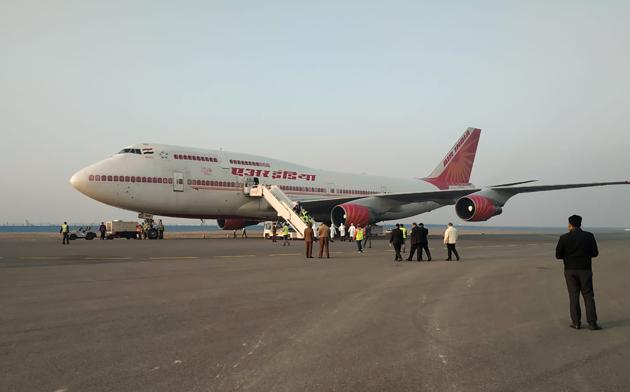How India quietly planned the evacuation of 600 Indian students from Wuhan
Alarm bells first went off in the quiet corridors of the Indian embassy on the evening of January 20 when President Xi Jinping made a public statement on the disease.
The evacuation of 647 Indians from Hubei, the province worst-hit by the new coronavirus pneumonia (NCP) outbreak, was a complex exercise which included the listing of hundreds of unregistered Indians, reassuring panicky Indian students about their safety and negotiating hard with Chinese authorities grappling with the most critical medical emergency in decades.

Diplomats in Beijing were discussing reports of a new influenza infection in central China soon after the first death from the novel Coronavirus pneumonia (NCP) was reported on January 10.
By the second week of January, Indian embassy officials in Beijing were wiping the “dust off” files of registered Indians in Hubei and in Wuhan, the capital city of the province.
Also Watch l Health Minister Harsh Vardhan lists steps taken to counter coronavirus
Hundreds of Indian students, they found out, had already left for India for the Chinese New Year (CNY) holidays.
India issued its first advisory on January 17 for citizens travelling to and from China.
Be careful, take precautions, it said.
Alarm bells first went off in the quiet corridors of the embassy on the evening of January 20 when President Xi Jinping made a public statement on the disease.
“The recent outbreak of novel coronavirus pneumonia in Wuhan and other places must be taken seriously,” Xi said.
It was about to be.
The morning of January 23 was the turning point – Wuhan had been locked down with hundreds of stranded Indians inside.
They had begun to call the embassy, wanting to be rescued, and some tweeting to New Delhi desperate calls for evacuation.
The embassy realised that the Indians needed to be extracted from the city, from the province, which had in a matter of days literally turned into a massive quarantine zone, which no one could access without multiple approvals.
In the next few days, embassy officials worked round-the-clock to list the Indians in Hubei.
It wasn’t easy as it is not mandatory for Indians to register with the embassy or consulates in China.
“We had to attach a name to the face, and then attached a passport number. We either emailed or called each individual. We assured them,” Ambassador Vikram Misri told HT.
Word-of-mouth and community groups helped.
At the end of the exercise, the total number of Indians still in Hubei was found to be around 680.
After that it was about negotiating with the Chinese government – starting from the foreign ministry in Beijing, then with the Hubei foreign office and lastly with Wuhan’s foreign office.
“We first made a case (to the Chinese foreign ministry). Especially about the young students and their parents in India whose natural desire was to see them back in India,” Misri said.
The foreign ministry facilitated the process after it was clear that New Delhi wanted the Indians in Hubei back in India, at least the ones who wanted to.
Then the logistics had to be put in place.
Then, the task was to coordinate with university authorities and arranging buses for Indians staying across Hubei to bring them to Wuhan.
Dozens of buses were hired.
All the drivers had to be registered with the Wuhan government so that they had the required permission to travel to different cities, many already under lockdown.
The embassy dispatched two diplomats Deepak Padmakumar and M Balakrishnan to Wuhan to coordinate the evacuation on February 1 and 2, who are now in quarantine in New Delhi.
Compared to the first, the second evacuation process was more complicated as more than 300 Indians had to be brought to Wuhan from different parts of the province.
As many as 15 buses were deployed to pick up Indians from 15 locations across Hubei including from cities 300 km to 350 km away; some had to be brought from Enshi, some 520 km away.
At a few places in Hubei, locals forcibly stopped the buses from entering their neighbourhood, fearing that the infection could spread.
A group of Chinese employees hunched over their phones at the Indian embassy then did the talking with the locals to persuade them to allow the buses to go through.
At least one Indian, however, missed out because the bus could not get through.
“Most critical was maintaining the integrity of the approval channels,” Misri added.
At the Wuhan airport, no tickets were issued to the evacuees, only boarding passes.
India had sent out messages to south Asian countries if they wanted their citizens from Hubei and Wuhan to be evacuated.
Maldives said yes and seven Maldivians were evacuated from Wuhan along with the Indians.
Misri said the embassy is in contact with the 80 Indian students who remain in Wuhan.
“We have assured them of all help and will keep them updated about any further development,” he said.
Get Current Updates on India News, Lok Sabha Election 2024 live, Elections 2024, Election 2024 Date along with Latest News and Top Headlines from India and around the world.



